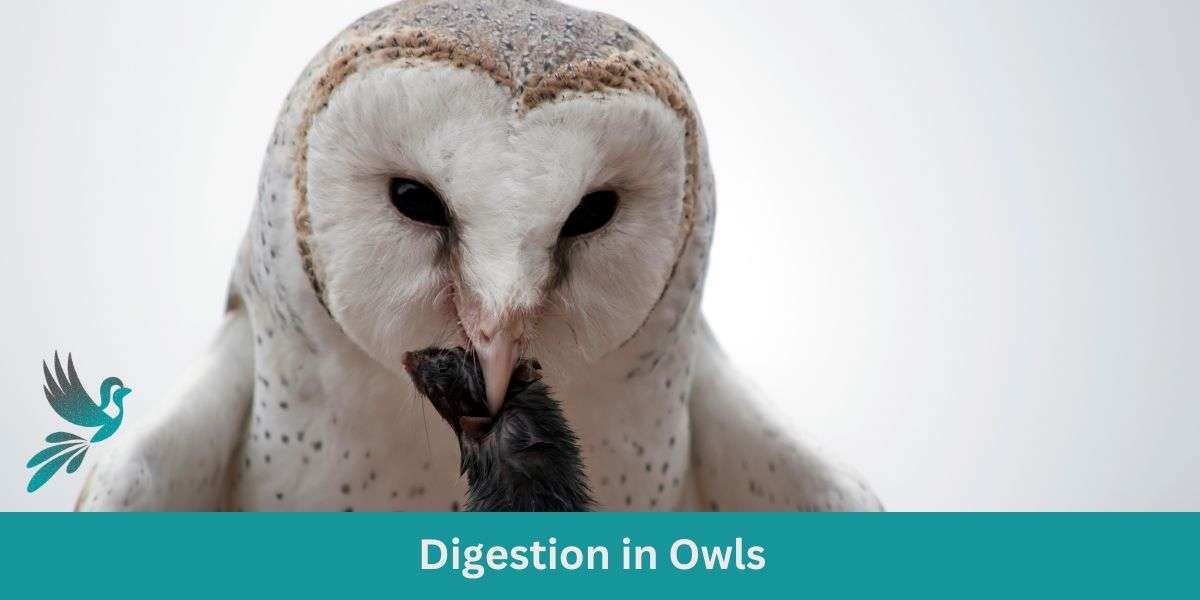Owls, renowned for their silent flight and nocturnal prowess, have a digestive system as unique as their calls echoing through the night. Unlike our conventional understanding of digestion, owls have developed a distinctive process that sets them apart from many other birds.
In this article, we’ll delve into the enigmatic world of owl digestion, revealing the journey from prey capture to pellet production.
Digestion in Owls
Owls have a unique digestive system that allows them to efficiently consume and process their prey. Unlike other birds, owls cannot chew their food. Small prey items are swallowed whole, while larger prey are torn into smaller pieces before being swallowed.
Some owl species will partially pluck bird and larger mammal prey. Let’s take a closer look at the various aspects of digestion in owls.
Chewing and Swallowing
As mentioned earlier, owls do not have the ability to chew their food. This is because their beak structure and jaw muscles are not designed for chewing.
Small prey, such as insects and rodents, are swallowed whole, while larger prey, such as birds and mammals, are torn into smaller pieces using their sharp beaks and strong talons. Once the prey is in smaller pieces, it is then swallowed.
The Lack of a Crop
Unlike many other birds, owls lack a crop. A crop is a loose sac in the throat that serves as storage for food for later consumption. Since owls do not have a crop, food is passed directly into their digestive system.
This means that owls must eat their prey immediately after catching it, as there is no storage space in their throat.
The Stomach and Gizzard
A bird’s stomach has two parts: the glandular stomach (proventriculus) and the muscular stomach (ventriculus or gizzard). The glandular stomach produces enzymes, acids, and mucus that begin the process of digestion.
The muscular stomach, on the other hand, does not have any digestive glands. In birds of prey, such as owls, the gizzard serves as a filter, holding back insoluble items such as bones, fur, teeth, and feathers.
The way owls process their food, especially considering What Do Owls Eat?, is fascinating. Their unique Owl Physiology plays a crucial role in their digestive process. If you’re intrigued by their habits around food and hunting, understanding their Owl Behavior is key. For those curious about the distinct sounds they make, especially post feeding, discover Why Do Owls Hoot?. And to get a comprehensive view on these raptors, our Guide to Owls is the go-to resource.
The Digestive System
After passing through the stomach, the soluble or soft parts of the food are ground by muscular contractions in the gizzard. These ground particles then pass through to the rest of the digestive system, which includes the small and large intestines.
In the small intestine, the liver and pancreas secrete digestive enzymes that help break down the food further. The nutrients from the food are then absorbed into the body through the walls of the small intestine.
The Liver and Pancreas
The liver and pancreas play important roles in the digestion process of owls. The liver produces bile, which helps break down fats in the food. The pancreas secretes digestive enzymes into the small intestine, which further break down proteins, carbohydrates, and fats.
These digestive enzymes are essential for the proper breakdown and absorption of nutrients from the food.
The Cloaca
At the end of the digestive tract, after the large intestine, is the cloaca. The cloaca is a holding area for wastes and products from the digestive and urinary systems. It acts as a common opening for the passage of feces, urine, and reproductive materials.
In birds, apart from the Ostrich, they do not have a bladder. The excretion from the cloaca is largely made up of an acid, which is the white part of a healthy dropping.
Regurgitation of Pellets
Several hours after eating, the indigestible parts of the prey, such as fur, bones, teeth, and feathers, that are still in the gizzard are compressed into a pellet. This pellet travels up from the gizzard back to the proventriculus.
It will remain in the proventriculus for up to 10 hours before being regurgitated. Regurgitation of pellets often signifies that an owl is ready to eat again. When the owl eats more than one prey item within several hours, the various remains are consolidated into one pellet.
Pellet Cycle
The pellet cycle in owls is regular, with the remains being regurgitated when the digestive system has finished extracting the nutrition from the food. This regurgitation often occurs at a favorite roosting spot. When an owl is about to produce a pellet, it will take on a pained expression.
The eyes are closed, the facial disc narrows, and the bird will be reluctant to fly. At the moment of expulsion, the neck is stretched up and forward, the beak is opened, and the pellet simply drops out without any retching or spitting movements.
Comparison to Other Birds of Prey
Owls have a unique digestive system compared to other birds of prey. One noticeable difference is that owl pellets contain a greater proportion of food residue compared to other raptors. This is because an owl’s digestive juices are less acidic, allowing for a greater amount of undigested material to remain in the pellet.
Other raptors tend to pluck their prey to a much larger extent than owls, resulting in fewer undigested materials in their pellets.


Leave a Reply
You must be logged in to post a comment.